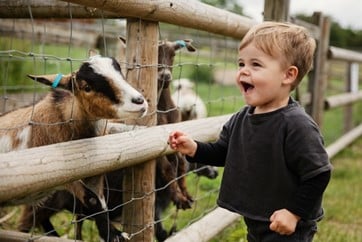As parents, understanding our children’s behavior can sometimes feel like trying to decipher a complex puzzle. From tantrums to mood swings, each behavior can be a clue to what’s going on in our child’s mind and body. By understanding the typical developmental milestones children reach at different ages, and utilizing various parenting skills, we can gain valuable insights into their behavior and provide appropriate support and guidance. In this guide, we’ll explore common behavioral issues at various stages of childhood and provide parents with tools to decode their child’s behavior.
Infancy (0-12 months)
During the first year of life, infants undergo rapid physical, cognitive, and emotional development. Common behavioral issues during this stage include:
- Crying: Infants communicate primarily through crying, which can indicate hunger, discomfort, fatigue, or the need for attention.
- Sleeping Patterns: Erratic sleep patterns, frequent night awakenings, and difficulty settling to sleep are common challenges for new parents.
- Attachment: Babies develop attachments to their primary caregivers and may exhibit separation anxiety when apart from them.
- Milestones: Milestones such as rolling over, sitting up, crawling, and babbling occur at different ages and stages of development.
Toddlerhood (1-3 years)
Toddlerhood is marked by newfound independence, exploration, and boundary-testing. Behavioral issues during this stage may include:
- Tantrums: Toddlers often express frustration or assert their independence through tantrums, which are a normal part of development.
- Imitation: Toddlers imitate the behaviors and actions of adults and older children, learning through observation and experimentation.
- Language Development: Toddlers begin to develop language skills, although their vocabulary may be limited, leading to frustration and communication breakdowns.
- Socialization: Toddlers start to interact with peers and may experience conflicts over sharing, taking turns, and asserting themselves.
Preschool (3-5 years)
Preschoolers continue to develop their social, emotional, and cognitive skills, preparing for the transition to school. Parenting solutions during this stage may include:
- Independence: Preschoolers seek independence and autonomy, wanting to do things on their own but still requiring guidance and support from adults.
- Imagination and Pretend Play: Children engage in imaginative play, creating elaborate scenarios and role-playing different roles and characters.
- Friendships: Preschoolers begin to form friendships and navigate social interactions, learning important skills such as sharing, empathy, and cooperation.
- Emotional Regulation: Children learn to identify and express their emotions, although they may still struggle with tantrums and mood swings.
School Age (6-12 years)
During the school-age years, children continue to develop their academic, social, and emotional skills. Behavioral issues during this stage may include:
- Academic Challenges: Children may experience stress or frustration related to schoolwork, homework, tests, and academic performance.
- Peer Relationships: Peer influence becomes more significant, and children may experience peer pressure, bullying, or conflicts with friends.
- Identity Formation: Children begin to develop a sense of identity and self-esteem, exploring their interests, strengths, and values.
- Independence and Responsibility: Children take on more responsibilities at home and school, such as chores, homework, and extracurricular activities.

Adolescence (13-18 years)
Adolescence is a period of rapid physical, emotional, and social development, marked by significant changes and challenges. Behavioral issues during this stage may include:
- Identity Exploration: Adolescents grapple with questions of identity, self-image, and belonging, seeking to establish their place in the world.
- Peer Pressure and Risk-Taking: Adolescents may engage in risky behaviors such as experimentation with drugs, alcohol, or sexual activity, influenced by peer pressure and a desire for social acceptance.
- Emotional Turmoil: Hormonal changes, academic stress, and social pressures can lead to mood swings, irritability, and emotional volatility.
- Family Dynamics: Adolescents may challenge parental authority, seek greater independence, and experience conflicts with family members as they assert their autonomy.
Tools for Decoding Your Child’s Behavior
- Observe and Listen: Pay attention to your child’s words, actions, and emotions, and try to understand what they might be communicating.
- Consider Developmental Stage: Take into account your child’s age and developmental stage when interpreting their behavior, as certain behaviors may be typical for their age.
- Communicate Openly: Create a safe and supportive environment where your child feels comfortable expressing their thoughts, feelings, and concerns.
- Seek Professional Help: If you have concerns about your child’s behavior or development, don’t hesitate to consult with a pediatrician, psychologist, or other qualified professional for guidance and support.
By understanding the typical developmental milestones children reach at different ages and stages, parents can gain valuable insights into their behavior and provide appropriate support and guidance. With patience, empathy, and understanding, parents can help their children navigate the challenges of childhood and adolescence, fostering healthy development and emotional well-being.

